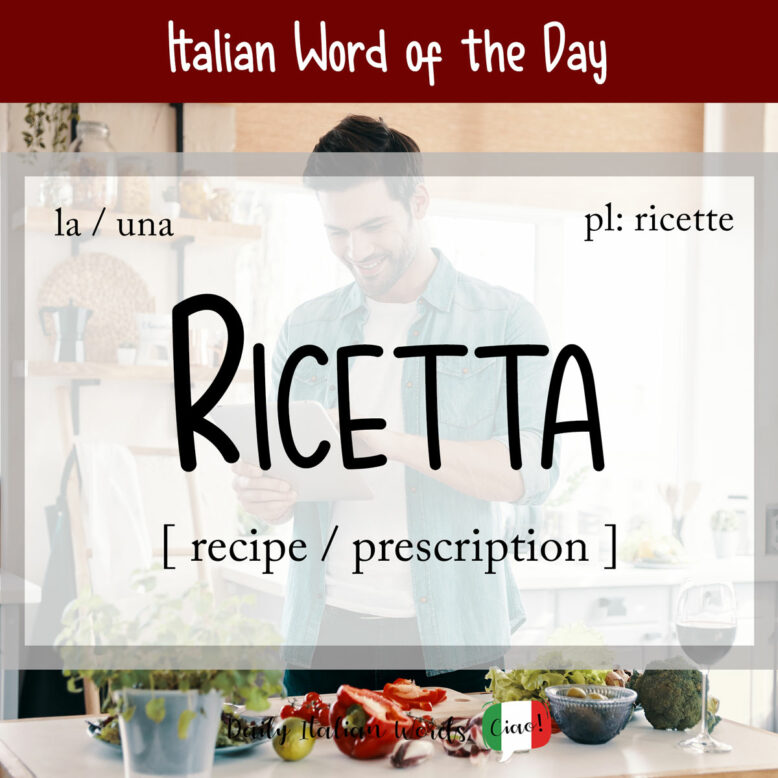Ricetta is the word Italians use for both recipe, as in a list of instructions for preparing a dish, and prescription, as in the instructions written by a doctor so that a patient may receive a medicine or treatment.

Curiously, in the 16th century, the word recipe in late Middle English used to refer to a medical prescription. It entered the English language via the French récipé, which in turn comes from the Latin recipe meaning “Take!” or “Receive!” (the word written by physicians at the head of prescriptions). The word only began to take on the modern meaning of “instructions for food preparation” in the early 1700s, whereas the older sense survives solely in the abbreviation Rx, a formal communication from a physician authorising them to dispense a specific drug to a patient.
Ricetta is a feminine noun in Italian, so it takes the following definite and indefinite articles:
- la ricetta = the recipe / prescription
- le ricette = the recipes / prescriptions
- una ricetta = a recipe / prescription
- (delle) ricette = (some) recipes / prescriptions
Ho seguito la ricetta alla lettera.
I followed the recipe to the letter.
Sono andato a ritirare la ricetta in farmacia.
I went to pick up the prescription at the pharmacy.

Ricetta may also be used in a figurative sense to denote a solution, remedy or fix to a problem. For example, “a remedy against boredom” could be translated as una ricetta contro la noia in Italian. A expression sometimes seen in newspapers is ricetta scaccia crisi (literally “a crisis-shooing remedy”) meaning a “solution for fighting economic downturn“.
Note that ricetta when used in a medical sense can also be called a ricetta medica.
Heather Broster is a graduate with honours in linguistics from the University of Western Ontario. She is an aspiring polyglot, proficient in English and Italian, as well as Japanese, Welsh, and French to varying degrees of fluency. Originally from Toronto, Heather has resided in various countries, notably Italy for a period of six years. Her primary focus lies in the fields of language acquisition, education, and bilingual instruction.


